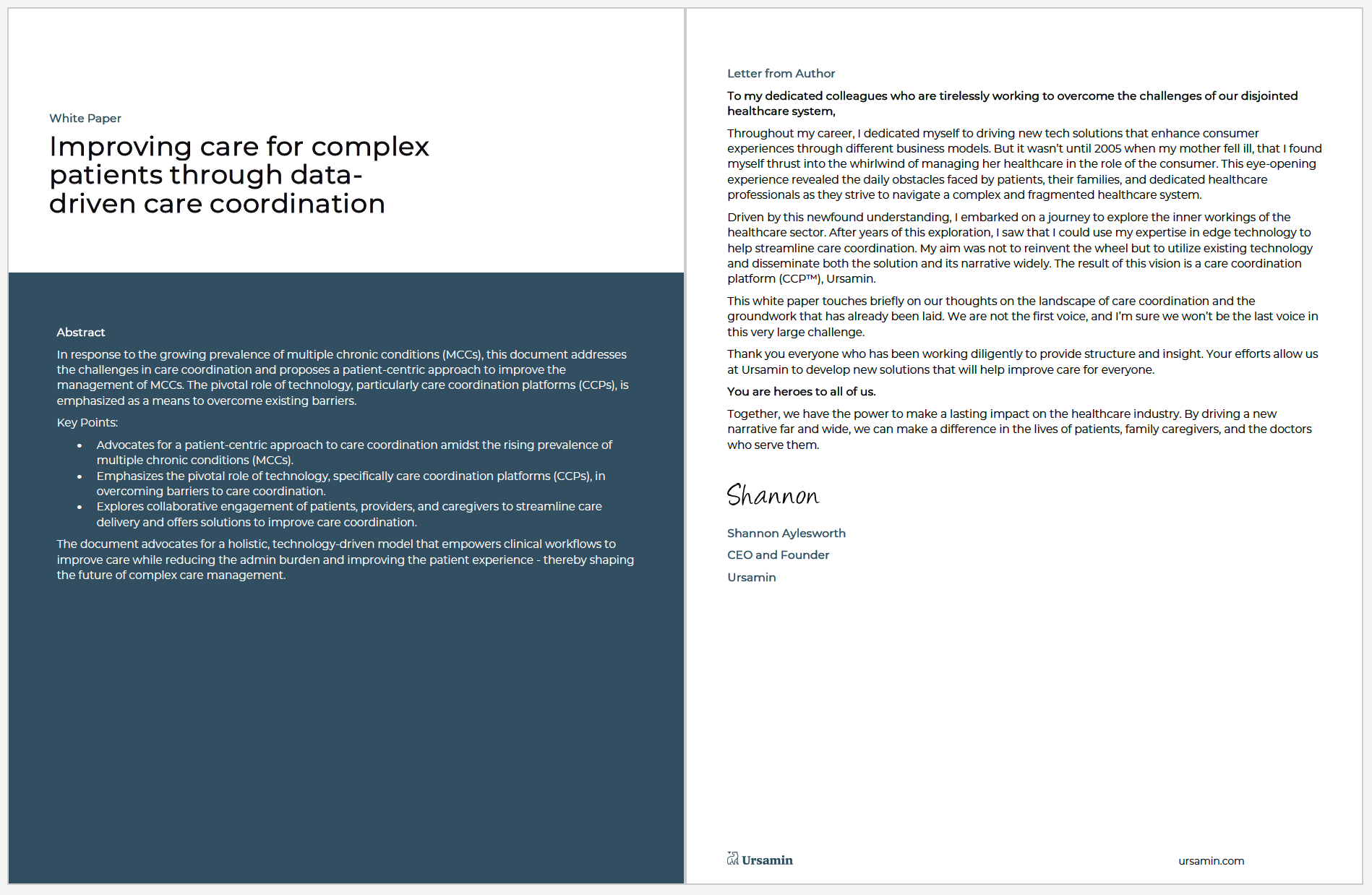In emergency medicine, every second counts, and every piece of information matters. The journey of a patient from outpatient to inpatient care, and vice versa, is critical to patient outcomes, and ER team effectiveness. Information needs to flow seamlessly into the emergency room (ER) during this transition. When it doesn’t, it significantly impacts the quality and speed of care.
Connecting patients longitudinally between these stages streamlines communication, improves patient outcomes, and enhances the overall quality of care in the ER. Now, let’s explore how strong team communication leads to better care.
Communication with Patients: Why it Matters
When patients arrive in the emergency room (ER), they’re often in distress, and they need answers quickly. Effective communication ensures that patients receive accurate information about their conditions, treatment plans, and medications. It empowers them to ask pertinent questions and actively participate in their care journey.
But most importantly, communication and teamwork across providers, patients, and caregivers build a foundation for more informed decision-making and improved patient safety. In the ER, clear and concise communication isn’t just about sharing information; it’s about alleviating patients’ anxiety and fears. Using language that patients can understand, free from medical jargon, is a hallmark of patient-centered care. When patients feel heard and understood, their overall experience is enhanced, leading to higher patient satisfaction.
Teamwork in Healthcare: The Key to Better Patient Care
Teamwork as the patient transitions into the ER setting ensures continuity of care, which is a crucial factor for better patient outcomes. Patients often interact with multiple healthcare providers, and effective communication between these professionals ensures a seamless handover of information. This reduces errors, avoids duplication of tests or treatments, and delivers holistic patient care. Additionally, teamwork:
– Allows for the pooling of diverse knowledge and skills: Each provider brings a unique perspective to the table, and through effective communication, they can combine their expertise to develop comprehensive treatment plans that address all aspects of a patient’s condition.
– Ensures continuity of care: Patients often receive care from multiple healthcare providers, and effective communication between these professionals ensures that there is seamless coordination and handover of information. This reduces the risk of errors, prevents duplication of tests or treatments, and provides a holistic approach to patient care.
– Promotes a positive work culture and job satisfaction: When communication flows freely between team members, it fosters a supportive environment where everyone feels valued and heard. This, in turn, translates to better patient care outcomes as healthcare professionals work together harmoniously to provide the best possible care.
The Impact of Poor Communication on Patient Outcomes in the Emergency Room
Poor communication in the emergency room (ER) can have significant negative impacts on patient outcomes. When communication among healthcare professionals is ineffective or lacking, it can lead to various problems that compromise patient care. Here are some of the consequences of poor communication in the ER:
1. Medical Errors: Poor communication increases the risk of medical errors in the ER. Miscommunication or incomplete transfer of information can result in incorrect treatments, medication errors, or missed diagnoses. These errors can have serious consequences for patient health and may lead to complications or even fatalities.
2. Delayed or Inappropriate Treatments: Inadequate communication can cause delays or inappropriate treatments in the ER. When critical information is not effectively communicated, healthcare professionals may not have a complete understanding of the patient’s condition or needs. This can lead to delays in necessary interventions or the administration of treatments that are not suitable for the patient’s condition.
3. Compromised Patient Safety: Poor communication compromises patient safety in the ER. When healthcare professionals are not well-informed about a patient’s condition, risks, or allergies, it increases the likelihood of adverse events. Lack of communication can also lead to confusion or misunderstandings, resulting in errors during procedures or treatments.
4. Negative Patient Experience: Ineffective communication negatively impacts the patient experience in the ER. When patients feel that their concerns are not heard or understood due to poor communication, it can lead to frustration, anxiety, and dissatisfaction. This can affect their overall perception of the quality of care they receive.
5. Increased Healthcare Costs: Poor communication in the ER can contribute to increased healthcare costs. Unnecessary tests or procedures may be ordered due to incomplete or inaccurate information, leading to higher healthcare expenses. Additionally, inadequate communication can result in prolonged hospital stays, which also adds to the overall cost of care.
Examples of Successful Communication Strategies in the Emergency Room
Implementing effective communication strategies in the emergency room (ER) has been shown to improve patient outcomes and overall quality of care. Here are some examples of successful communication strategies that have been implemented in the ER:
1. Standardized Communication Protocols: Implementing standardized communication protocols, such as SBAR (Situation, Background, Assessment, Recommendation), improves clarity and reduces miscommunication. SBAR provides a structured format for communicating critical information about patient conditions, facilitating clear and concise communication among healthcare professionals.
2. Utilization of Communication Tools: In the context of value-based healthcare models, technology and tools are indispensable for efficient communication within the ER. For example, the integration of a comprehensive healthcare coordination platform streamlines communication and collaboration. Platforms that exist like this help enable secure automated sharing of critical patient information, including consolidated data retrieval, patient records, and bi-directional communication, eliminating the need for traditional emailing or document uploading. Such a platform acts as a silent partner, enhancing communication and reducing errors in the ER, ultimately leading to better patient care and outcomes.
3. Regular Huddles and Briefings: Regular huddles and briefings in the ER promote effective communication and ensure all team members are informed about patient status and care plans. These short meetings provide an opportunity for healthcare professionals to discuss patient updates, plan interventions, and address any concerns or questions. Regular huddles facilitate collaboration and keep the entire team on the same page.
4. Simulation Training and Role-Playing Exercises: Simulation training and role-playing exercises help healthcare professionals develop effective communication skills in high-pressure situations. These exercises mimic real-life scenarios in the ER, allowing healthcare professionals to practice communication techniques, teamwork, and decision-making. By enhancing their communication skills, healthcare professionals can better handle challenging situations in the ER.
By adopting strategies like these, healthcare professionals can improve communication and collaboration – ultimately, enhancing patient care.
Effective communication is the secret weapon that healthcare professionals can use to transform patient care. Let’s continue this conversation! Check out Ursamin’s Unlimited Access podcast featuring ER physician Dr. Julie Shapiro.
During this podcast, Dr. Shapiro covers how she drives teamwork and communication in the ER. Some of her techniques involve using emerging health tech solutions. Access the podcast here: Navigating the Challenges of Emergency Medicine: An In-Depth Chat with Dr. Julie Shapiro: https://ursamin.com/blog-articles/navigating-the-challenges-of-emergency-medicine-an-in-depth-chat-with-dr-julie-shapiro





